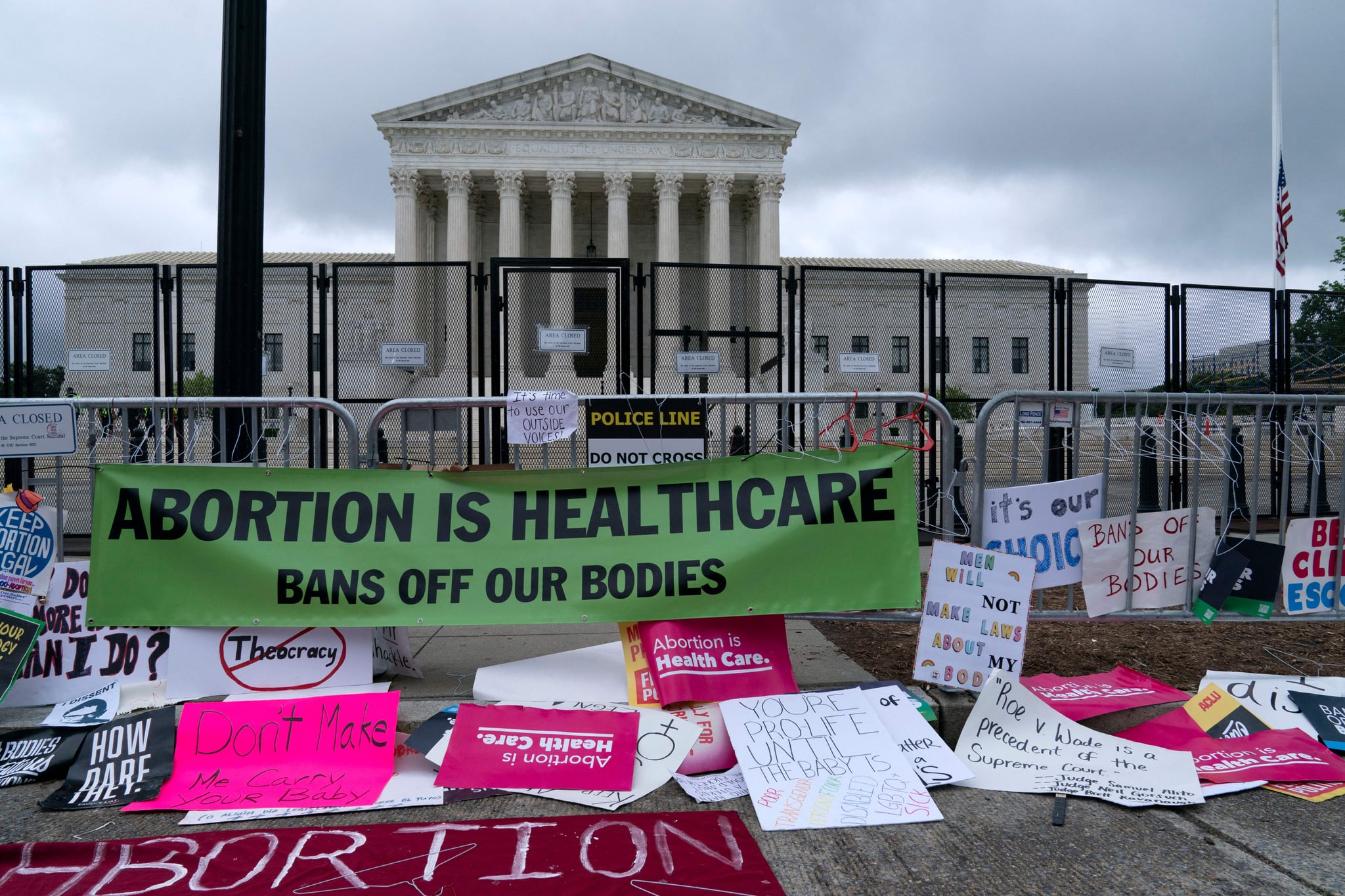Products You May Like

On Friday, June 24, the Supreme Court of the United States ruled to uphold Mississippi’s 15-week abortion ban. In doing so, the Court has effectively overturned Roe v. Wade, a 1973 case in which it was decided that the Constitution generally protects a pregnant person’s freedom to choose to have an abortion, and Planned Parenthood v. Casey, a 1992 case in which the Court upheld a person’s right to abortion as established under Roe v. Wade.
The syllabus reads, “The Constitution does not confer a right to abortion; Roe and Casey
are overruled; and the authority to regulate abortion is returned to the
people and their elected representatives.”
This ruling is in keeping with the draft opinion written by Supreme Court Justice Samuel Alito, which was leaked on May 2. The case in question is Dobbs v. Jackson Women’s Health Organization. It centers on a law banning abortion at 15 weeks that was passed in Mississippi in 2018. Jackson Women’s Health Organization is the only abortion clinic in the state and Thomas E. Dobbs is the Mississippi State Department of Health’s state health officer.
Dobbs v. Jackson Women’s Health Organization centered on whether it is unconstitutional for a state to ban pre-viability abortions, referring to abortions that take place before fetus could survive outside the womb. Roe v. Wade established that these bans were unconstitutional; Planned Parenthood v. Casey upheld Roe’s ruling that pregnant people have the right to choose a pre-viability abortion “without undue interference from the State” — such as imposing “an undue burden on a woman’s ability to make this decision” or creating “a substantial obstacle to the woman’s effective right to elect the procedure.”
It is impossible to overstate the seismic consequences of the Supreme Court’s ruling. The court has upended nearly 50 years of settled precedent upholding pregnant people’s constitutional right to abortion and has left it up to the states to decide on abortion policy. As Rosa Valderrama, the senior public affairs and communications associate at the National Latina Institute for Reproductive Justice previously wrote for POPSUGAR, “Forcing a person to remain pregnant and give birth against their will is a gross violation of our human rights and dignity.” And yet, that’s exactly what the Supreme Court just made possible. We know that 13 states have “trigger laws” on the books, referring to laws that would allow these states to essentially ban abortions nearly immediately following this decision. And the people most impacted by extreme abortion bans are low-income people and those who already face restrictions to their ability to access abortions.
It’s expected that states that don’t have extreme abortion bans on the books will see increasing demand for reproductive healthcare following the ruling, as was seen following Texas’s six-week ban. Some clinics in nearby states reported being overwhelmed by the influx in cases. One tangible step you can take to help states in need is to donate to abortion funds, which are organizations dedicated to helping people access abortions.
This is not the first time in the past month that the US Supreme Court has demonstrated a willingness to upend precedent. On June 13, the Court rejected a petition to reevaluate a death sentence in a Texas case and in doing so “effectively allow[ed] a lower court to overrule one of the Supreme Court’s own prior decisions, [which] undermines the rule of law itself,” reports Reuters. This ruling, and the Dobbs v. Jackson Women’s Health Organization decision, have caused many to criticize the Court for allowing their rulings to be influenced by their own political views, rather than to be based purely in law.
This term, SCOTUS has already made significant rulings that affect the Second Amendment, the separation of church and state, the First Amendment, and more.
This is a developing story. This post will be updated throughout the day with more information
